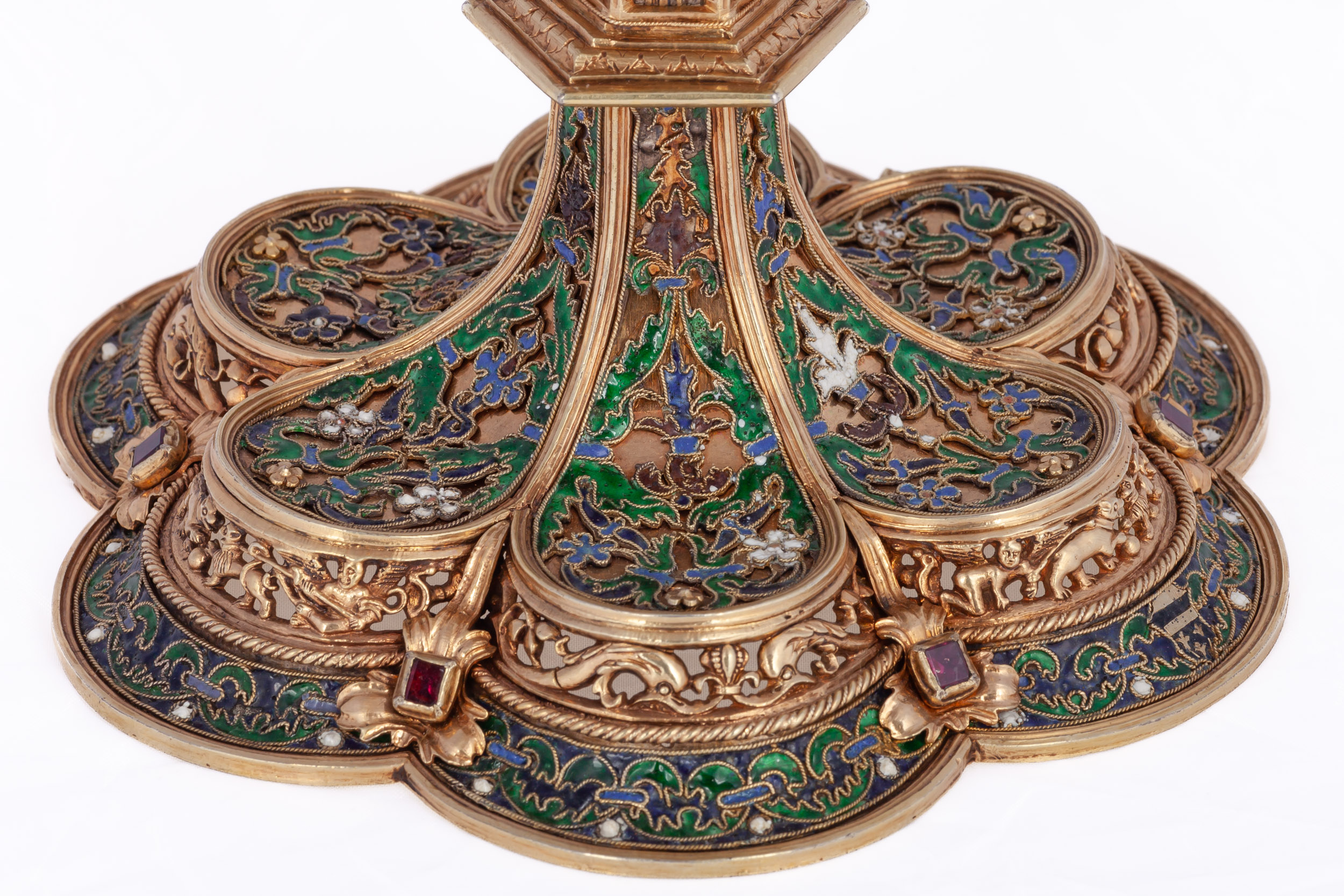
Six-petaled base of a chalice from the year 1524
- Description
- The most numerous group of relics preserved in the treasury are chalices used for Mass, whose functional purpose dominates over the variety of stylistic solutions, making most of them continuously used in liturgical services. They represent all periods in art from the late Gothic to the present day and were the most popular item funded by canons, bishops, and laypeople, entering church collections. Among them are such artistically perfect works as the chalice funded by Canon Johannes Hoffmann in 1501, which showcases the mastery of enamelled plastic decorations, or the chalice of Bishop Jerin by Michael Schneider, with Renaissance balance in the proportions of form and decoration. The Wrocław Cathedral houses a significant collection of works from Augsburg, a leading center of goldsmith art in Europe in the 17th and 18th centuries, and an extremely popular place for orders and purchases made by courts and religious centers. Such is the origin of one of the most important works of Augsburg goldsmithing in the Wrocław Cathedral: the golden figure of Saint John the Evangelist, a valuable gift from Bishop Charles Ferdinand Vasa. It is one of those goldsmith masterpieces that venture into the realm of sculptural art, demonstrating both the highest skill of its creator and the taste and generosity of the commissioner using precious material. The Wrocław Cathedral's own order placed in Augsburg includes a set of works intended to enhance the arrangement of the main altar. This includes a large silver antependium by Abraham II Drentwett (1647-1729), the tabernacle of Joseph Wolfgang Fesenmayr (circa 1680-1721), and the figures of Saints John the Baptist, John the Evangelist, Hedwig, and Vincent.